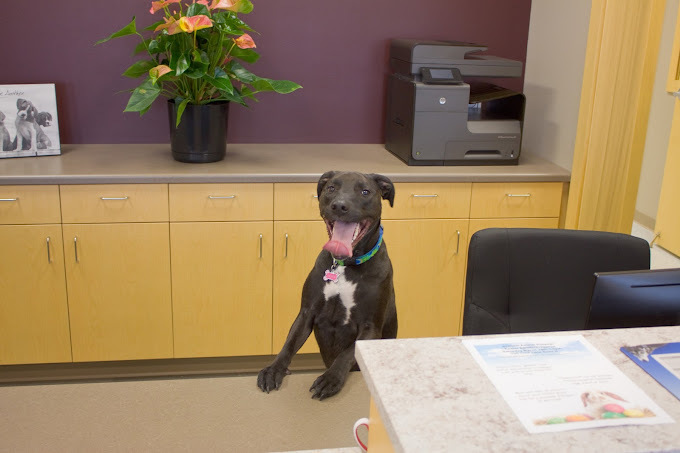Designing for Paws and Claws: Crafting the Ideal Veterinary Clinic for Enhanced Animal Care and Comfort
Designing a veterinary clinic involves a deep understanding of the unique needs of animals, their owners, and veterinary staff. This industry-specific approach aims to create a space that reduces stress for animals, provides comfort and convenience for pet owners, and ensures efficiency and safety for professionals. With thoughtful design, a veterinary clinic can become a place where high-quality animal care is seamlessly blended with a positive and reassuring atmosphere for everyone involved.
Prioritizing Animal Well-being and Stress Reduction
Creating a Stress-free Environment for Various Species
- A fundamental aspect of veterinary clinic design is minimizing stress for all animals. This involves creating separate waiting areas for different species, such as cats, dogs, and exotic pets, to prevent visual and olfactory stress triggers. The use of pheromone diffusers in these areas can further reduce anxiety for pets. Flooring should be non-slip to ensure safety for animals and staff alike, with considerations for noise reduction to minimize the startling effects of loud sounds. Materials such as rubber flooring can absorb sound and provide a more tranquil environment.
- The color palette within the clinic should include calming colors that are soothing to both animals and humans. Research suggests that animals perceive colors differently; for example, dogs see the world in a dichromatic vision similar to a human’s view of the twilight. Thus, choosing hues that are calming to both the human and animal eye—such as soft blues, greens, and earth tones—can create a serene atmosphere.
Enhancing Comfort for Pet Owners
- The comfort of pet owners is also paramount, as their anxiety can transfer to their pets. Waiting areas should be welcoming, with comfortable seating and amenities such as free Wi-Fi, refreshment stations, and a variety of magazines or books. Providing clear, educational content on digital displays can engage pet owners and offer valuable insights into pet care, nutrition, and behavior, reinforcing the clinic’s role as a trusted source of information.
- Private consultation rooms allow for sensitive discussions away from the bustle of the main clinic areas. These spaces should be designed to feel inviting and secure, with seating arranged to facilitate open conversations between veterinarians and pet owners.
Operational Efficiency Through Strategic Design
The operational flow of a veterinary clinic is critical to its success. A well-designed layout ensures a smooth transition from reception to examination rooms and treatment areas. This minimizes stress for pets and streamlines the work process for staff. Examination rooms should be versatile, equipped to handle various types of appointments—from routine vaccinations to emergency consultations. Innovative storage solutions can keep essential tools within reach without cluttering the space.
Treatment areas and surgical suites require meticulous design to support complex veterinary procedures. Durable, easy-to-clean surfaces are essential, and the strategic placement of equipment can optimize the space for both emergency and routine care. Lighting in these areas needs to be adaptable, providing everything from soft ambient light to bright, focused illumination for surgeries.
Specialized Design Elements for Veterinary Clinics
Advanced Acoustic Solutions
- Given the heightened sensitivity of animals to noise, advanced acoustic solutions are vital. Soundproofing examination and treatment rooms can shield pets from distressing noises, creating a calmer environment conducive to successful veterinary visits. Additionally, implementing a sound masking system with gentle, calming sounds can further alleviate animal anxiety and enhance the overall atmosphere of the clinic.
Thoughtful Material Selection
- Materials used throughout the clinic must be chosen with both hygiene and comfort in mind. Non-porous surfaces for countertops and examination tables ensure easy disinfection, while wall finishes should resist scratches and be easy to clean. In areas frequented by pets and their owners, materials should also contribute to the overall aesthetic appeal, reinforcing the clinic’s professional and caring image.
Incorporating Technology for a Modern Veterinary Experience
Technology plays a crucial role in modern veterinary care, from diagnostic tools to client communication systems. Designing spaces to accommodate technological advancements—such as digital check-in kiosks, telemedicine consultation areas, and state-of-the-art diagnostic equipment—can enhance efficiency and the quality of care. The integration of technology should be seamless, ensuring that it supports staff workflows and improves the client and patient experience without overwhelming the space.
Addressing the Needs of Diverse Animal Clients
Veterinary clinics cater to a wide range of animals, requiring flexibility in design to accommodate the varying needs of small pets, large breeds, and exotic animals. Examination rooms with adjustable tables and specialized equipment can provide for the diverse clientele. For larger animals, considerations might include wider doorways and specialized holding areas that ensure safety and comfort.
Sustainability and Eco-friendliness
Incorporating sustainable design elements reflects a commitment to environmental stewardship—a value that resonates with many pet owners. Energy-efficient lighting, water-saving fixtures, and the use of recycled or sustainable materials can minimize the clinic’s environmental footprint while promoting a healthy indoor environment. Green spaces, whether indoor plantings or outdoor areas, can enhance the clinic’s atmosphere, providing visual comfort and reinforcing the connection between animal care and nature.
A Holistic Approach to Veterinary Clinic Design
The design of a veterinary clinic is a complex endeavor that requires a holistic approach, taking into account the needs and well-being of animals, the comfort and convenience of pet owners, and the operational efficiency of veterinary professionals. By focusing on stress reduction, operational flow, specialized design elements, technology integration, and sustainability, a veterinary clinic can become more than just a place for medical care—it can be a space where high-quality animal health care is delivered with compassion and excellence, fostering a positive experience for all.
You Might Also Like
No Results Found
The page you requested could not be found. Try refining your search, or use the navigation above to locate the post.


